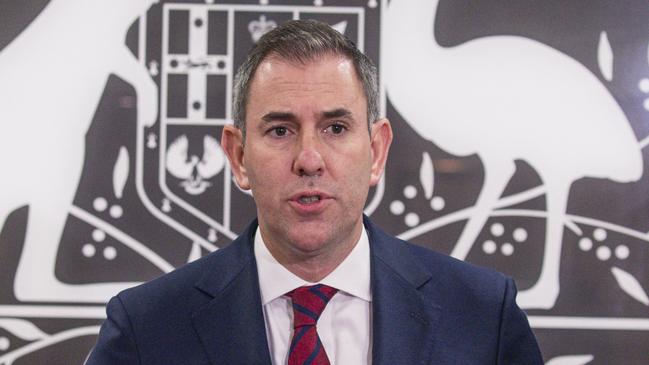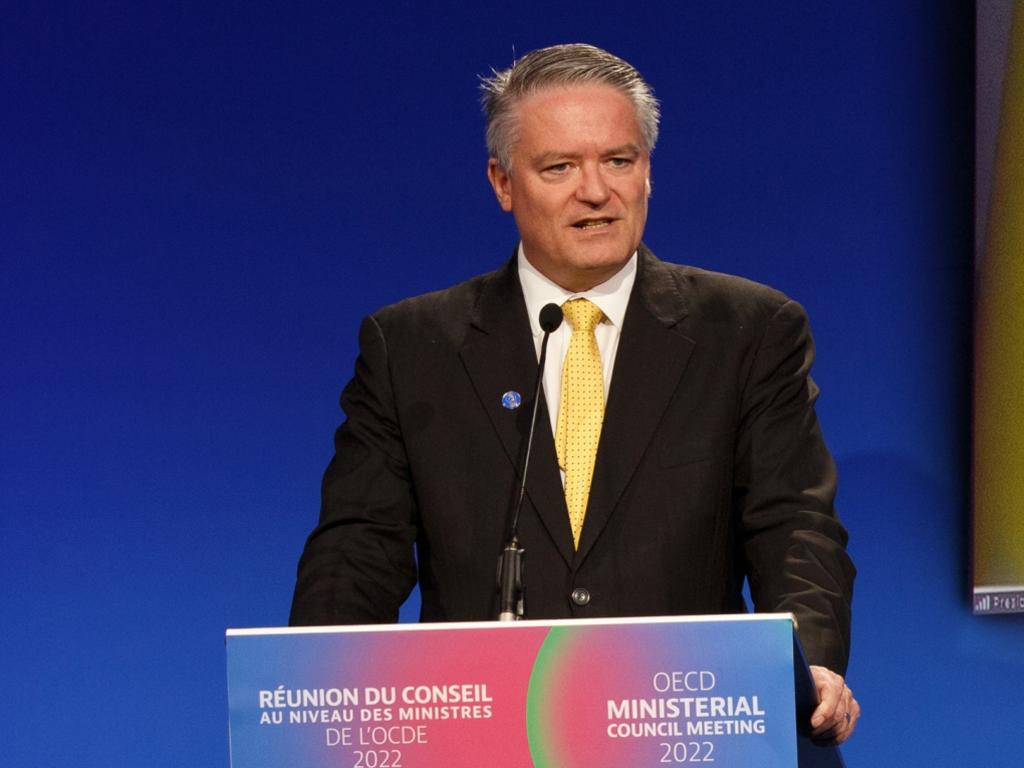Federal, state governments begin $650bn borrowing binge: Westpac
A four-year borrowing spree by governments is expected to reach levels typically experienced during economic crises, Westpac says.

Spendthrift federal and state governments are setting off on a $650bn four-year borrowing spree, with the burden on the public credit card expected to rise to levels typically experienced during economic crises.
As Jim Chalmers prepares to unveil new spending measures in Wednesday’s mid-year budget update, analysis from Westpac senior economist Pat Bustamante forecasts government borrowing to almost double this financial year to be just over 6 per cent of GDP and higher still in 2025-26.
“This would be broadly in line with what was borrowed at the height of the GFC, higher than what was borrowed during the protracted early 1990s recession, and only surpassed by government borrowing during the pandemic,” Mr Bustamante said.
“Borrowing of this magnitude has previously been a response to a significant deterioration in the labour market and the threat of a protracted recession.”
From there, the analysis showed new government borrowing remaining at or above 5 per cent of GDP over the next two years, amounting to approximately $650bn over the four-year forward estimates period.
The Treasurer has banked two budget surpluses in the past two fiscal years but in May said he was expecting an underlying cash deficit of $28.3bn this year.
Ahead of an expected boom in public borrowing, Mr Bustamante said the starting position was already “precarious”, with net borrowing amounting to 3.2 per cent of GDP, almost entirely driven by the states.
Despite enjoying significant revenue windfalls in the years after the pandemic, government budgets are feeling the pinch from an easing in commodity prices, a slowdown in migration, and the stage three tax cuts.
With revenues failing to keep pace with spending, governments have begun to turn to higher levels of borrowing.
The Westpac report comes as Dr Chalmers on Tuesday confirmed that the December 18 budget update would show spending levels were exceeding their forecasts and a further deterioration in the bottom line, compared with May’s budget papers.
“There’ll be an estimates variation in the budget of almost $2bn for natural disasters, which is unavoidable spending,” he said. “It’s actually one of a number of estimates variations which have seen a little bit of slippage in the bottom line compared to budget.”
Dr Chalmers has also hinted at extra cost-of-living support ahead of the election, including the extension of Labor’s $300 household electricity rebates at a cost to the federal budget of about $3.2bn.
With the public sector accounting for a record share of the economy, some economists say further expenditure risks undermining the Reserve Bank’s inflation fight when it was trying to cool demand.
That view was shared by Commonwealth Bank chief economist Stephen Halmarick, who warned against a loosening of fiscal purse strings in the lead-up to the federal election, which must be held on or before May 17. “The risk is that further substantial easing of fiscal policy could limit the RBA’s ability to ease monetary policy, if the increased government spending added to inflationary pressures in the economy,” he said.
In the September quarter, government borrowing almost tripled to more than $37bn, national accounts figures last week showed, in what was the highest reading since 2021 when pandemic-era lockdowns and restrictions stretched public finances.
While current levels of government debt were lower than in many peer economies, meaning Australia was prepared to respond to any economic shock, Mr Bustamante said a further deterioration in federal and state finances risked eroding that enviable position.
“As debt escalates … governments may feel less able to quickly deploy balance sheet strength to help absorb future shocks,” he said, pointing to the GFC and pandemic when governments were able to quickly respond.
Before these shocks, governments had reduced new borrowing to 0.7 per cent of GDP in 2006-07 and around 2 per cent of GDP in 2018-19.





To join the conversation, please log in. Don't have an account? Register
Join the conversation, you are commenting as Logout